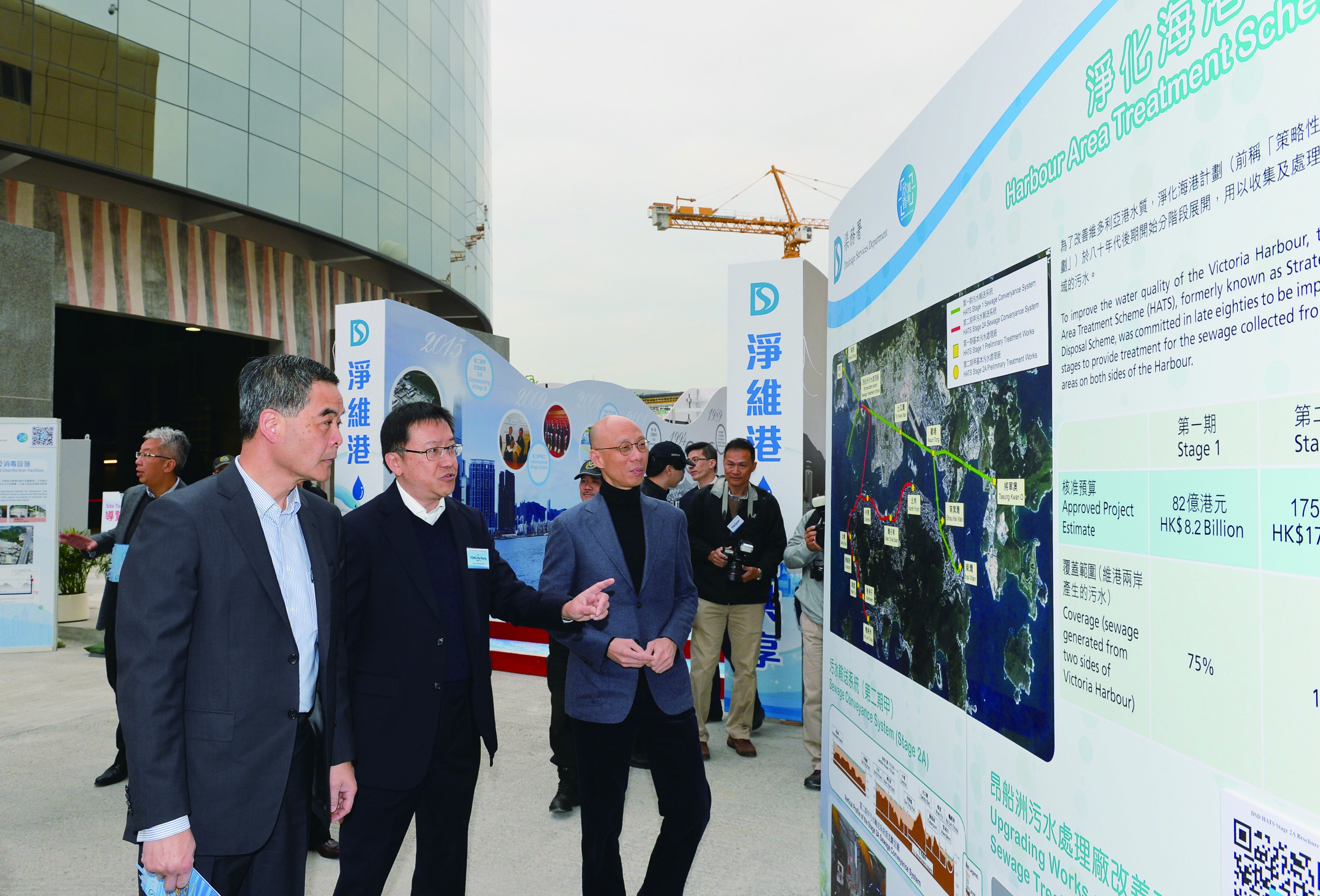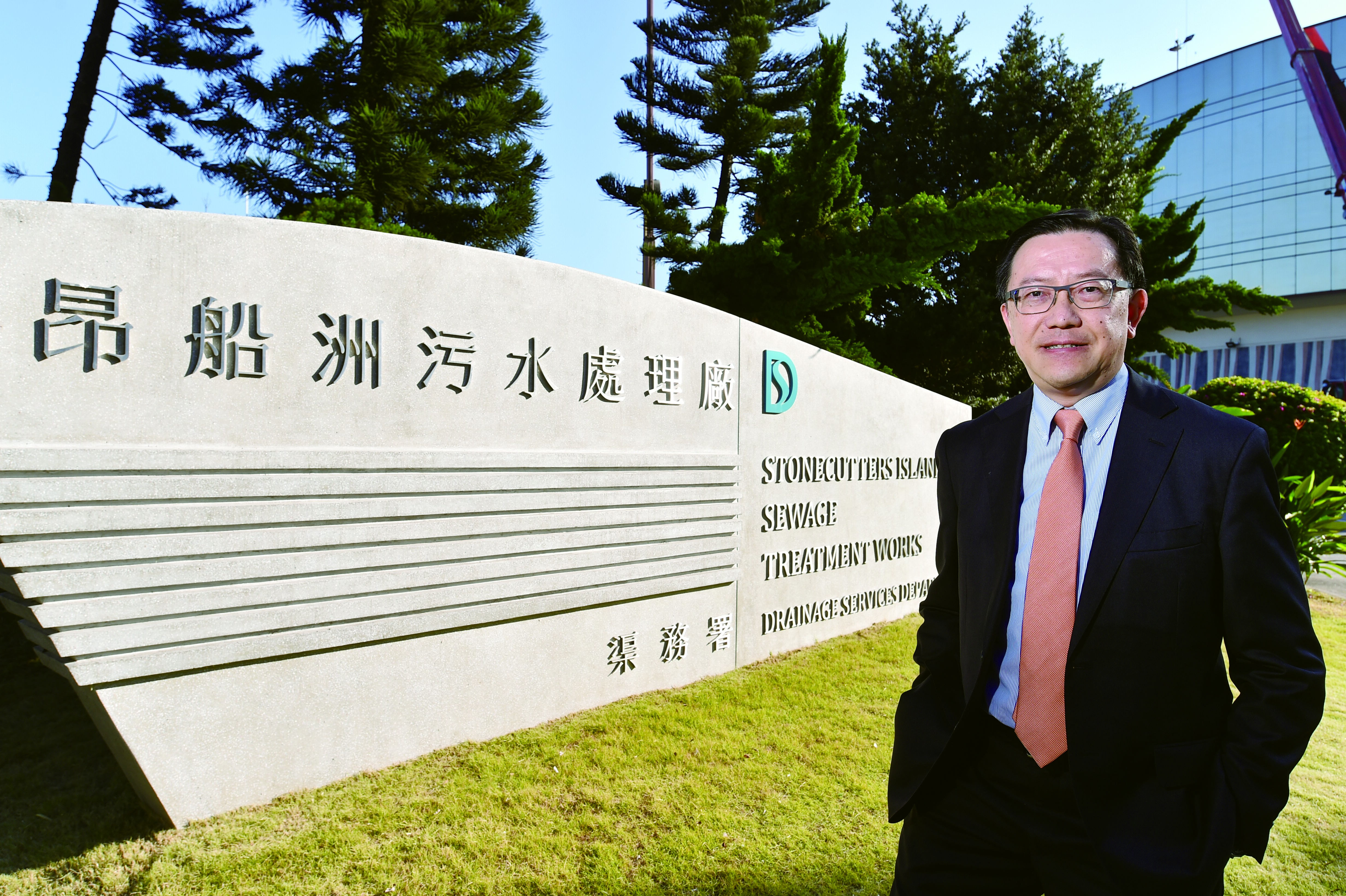

Dear Harbour,
The Harbour Area Treatment Scheme, or HATS, was designed to serve up to 5.7 million people. As such, extensive consultation and community engagement as well as rapport building were important to get people’s buy-in. Listening to different stakeholders’ views also helped minimise disruption to community life and normal economic activities during HATS construction and its subsequent operation.
Naturally, a mega infrastructure project straddling more than two decades and on the scale of HATS would not be smooth sailing all the way. Indeed, HATS Stage 1 drew public concerns about the environmental and technical problems associated with its deep tunnels, as well as criticisms of its sewage treatment level and heavy reliance on one centralised treatment works.
The project team learnt very quickly that HATS had to earn the trust of the public and community support if it was to succeed. We thus undertook an extensive communication and public engagement programme for HATS Stage 2.
Public Consultation
Back in the 1990s, it was not common practice to conduct extensive public consultation on government projects, and HATS Stage 1 was no exception. There was formal consultation on HATS Stage 1, including presentations to the Legislative Council and District Councils, called District Boards at that time. The Government also set up the first International Review Panel (IRP) in 1994 to examine the Stage 1 plan. After Stage 1 full commissioning and with the benefit of experience from Stage 1, the project team embarked on a more extensive public consultation and community engagement programme for Stage 2.
On an expert level, the Government set up the second IRP in 2000 to examine its treatment and disposal options for Stage 2 of HATS. It was the second IRP which paved the way for the first public territory-wide consultation on HATS.
In its final report released in November 2000, the second IRP proposed four treatment and discharge options with varying degrees of decentralisation and recommended the Government carry out a series of technical trials and studies to determine the way forward.
Upon completion of those trials and studies in June 2004, the Government moved on to conduct a five-month, territory-wide public consultation from June to November 2004. In-depth briefings on HATS Stage 2 were provided to key stakeholders such as green groups, professional bodies and community representatives. A public hearing was also held to collect views from the public directly.
Overall, the public expressed very positive views about water quality improvements achieved since HATS Stage 1 was commissioned in 2001. The public also supported the implementation of HATS Stage 2 in two phases, as proposed by the Government, to bring further improvement to our Harbour water quality.
There was also strong public support for the “polluter pays” principle in funding sewage treatment services in the territory, a vital element for the new works and ongoing operation of HATS. Results of the public consultation were reported to the Legislative Council, which eventually gave the green light to HATS Stage 2A.
Continuous Public Involvement
Despite overall public support for HATS, there were still specific concerns about the disinfection facilities proposed for the Stonecutters Island Sewage Treatment Works (SCISTW), such as worries about the effectiveness of different disinfection technologies, the toxicity effects of by-products from the disinfectants on marine ecology, and the environmental impacts of Stage 2A on human health and aquatic life.
The Government next commissioned two Environmental Impact Assessment (EIA) studies, one on the Advance Disinfection Facility for the SCISTW and the other on HATS Stage 2A works. The EIAs were an excellent opportunity to address the public concerns, as they provided a framework for comprehensive environmental impact assessments on every aspect of Stage 2A works, including water quality, odour and other risks to human and marine life.
Leveraging the EIAs, the project team decided to adopt a proactive Continuous Public Involvement (CPI) programme to facilitate the public to learn about HATS Stage 2A. Our aim was to help members of the public become reasonably conversant with the issues when giving opinions and suggestions, which would in turn help finetune the project. Intensive and targeted, the CPI programme lasted more than two years from December 2005 to January 2008.
In addition to holding formal briefings for District Councils, the Legislative Council and the Advisory Council on Environment, six more rounds of public consultations were held for specific sectors like green groups, academics and professional institutions to solicit in-depth views. Various concerns expressed were fully considered and responded to through follow-up communications and meetings. This was well documented in the EIA reports, and approval of the EIA studies was subsequently obtained from the authorities with minimal public objections.
Engaging the Community and Media
The project team decided early on that a comprehensive community engagement programme for HATS Stage 2A works would be invaluable, in particular in those districts along the alignment of the deep tunnel system. DSD set up a dedicated committee that met regularly to plan and oversee all community relations, public engagement and publicity activities. Key contractors were also obligated to put together a front-line community relations team to help implement the programme.
A wide range of communication and rapport building tools were deployed: regular newsletters on engineering works updates, a 24-hour hotline, community outreach programmes for schools, site visits for students and interested groups, drawing competitions for site hoardings, fundraising activities for the Community Chest and other charitable organisations, and blood donation days for the Red Cross — just to name a few.
The project team and its contractors also took extra measures to make sure that the drill and blast method used for Stage 2A tunnelling caused minimal disruption to nearby neighbourhoods. Special visits were made, for example, to schools, hotels and homes for the elderly near the tunnel alignment and even the Society for the Prevention of Cruelty to Animals to allay their concerns about the potential impact of underground blasting. After a few rounds of communication and several test blasts, the actual drill and blast works proceeded smoothly without noticeable disruption to the neighbourhood.
Media relations was another component of our publicity and engagement exercise. Numerous media briefings were held to mark key milestones, such as the breakthrough of major sections of the deep tunnels, the maiden voyage of the two sludge vessels, the activation of the flow turning process at the upgraded Preliminary Treatment Works, and the grand commissioning ceremony for Stage 2A.
Overall, both local and international media coverage was positive and enthusiastic, reflecting the sentiment that HATS was truly a project for the good of the Harbour and everyone in Hong Kong.
Awards and Recognition
HATS has won numerous local, national and international awards for its engineering excellence and technological innovation in recent years, not to mention various occupational safety and health accolades and other excellence awards that our contractors have won for HATS-related work.
Here are just a few of the major awards in the HATS trophy cabinet.
- The Global Water Award by the International Water Association (IWA) recognises significant contributions to the world in which water is wisely managed. The HATS project, together with the T · PARK project, won the IWA Global Water Awards — Wastewater Project of the Year (Distinction) in 2016 , the most prestigious international honour.
- The HATS project was awarded the 15th Tien-yow Jeme Civil Engineering Prize — Municipal Engineering Category in 2018 for its outstanding achievements in technological innovation and application. Established by the China Civil Engineering Society and the Beijing Tien-yow Jeme Foundation for Development of Science and Technology in Civil Engineering, this award is widely known as the top civil engineering prize in China.
- Other international awards have also followed, such as the British Construction Industry Awards — International Project of the Year (Highly Commended) in 2016 . This is a prestigious award in the built environment sector, with winning projects and teams recognised for their achievements within the industry and among the public at large.
- The HATS project also won the 2018 Edmund Hambly Medal of the Institution of Civil Engineers, U.K . for its outstanding achievements in sustainable development.
- Here in Hong Kong, the HATS project got the Second Highest Votes in the Hong Kong People Engineering Wonders in the 21st Century in 2013 — a public poll organised by the Hong Kong Institution of Engineers. This award aims to enrich the public’s understanding of engineering projects in Hong Kong and to recognise the contribution of local engineers to sustainable development in our city.
- Also in Hong Kong, the HATS project won the Silver Award in the Public Sector Category of the Construction Industry Council Sustainable Construction Award 2018 for its achievements in sustainable construction.
So, dear Harbour, our mission to make your water pristine and healthy again is accomplished. But we must make sure that your water stays clean and healthy in the long run in a sustainable manner — the topic for another letter.
POSTSCRIPT
“I am one of the few who have participated in both HATS Stage 1 and Stage 2A works. There are many unforgettable experiences, such as dealing with the Stage 1 contractor which unilaterally abandoned the works, the underground water ingress problem, and alleviating concerns about the project in certain quarters of the community. The most memorable occasions are the first tunnel breakthrough in Stage 1, the flow turning of the Stage 2A works and the full commissioning ceremony. All of them are exciting moments.”
“In future we must continue to monitor the water quality in Victoria Harbour to ensure it is no longer affected by pollution. We must also monitor the deep tunnel system to make sure that it operates smoothly, and explore more application of new technology to make HATS operate even better.”
Edwin TONG Ka-hung
Director,
Drainage Services Department



